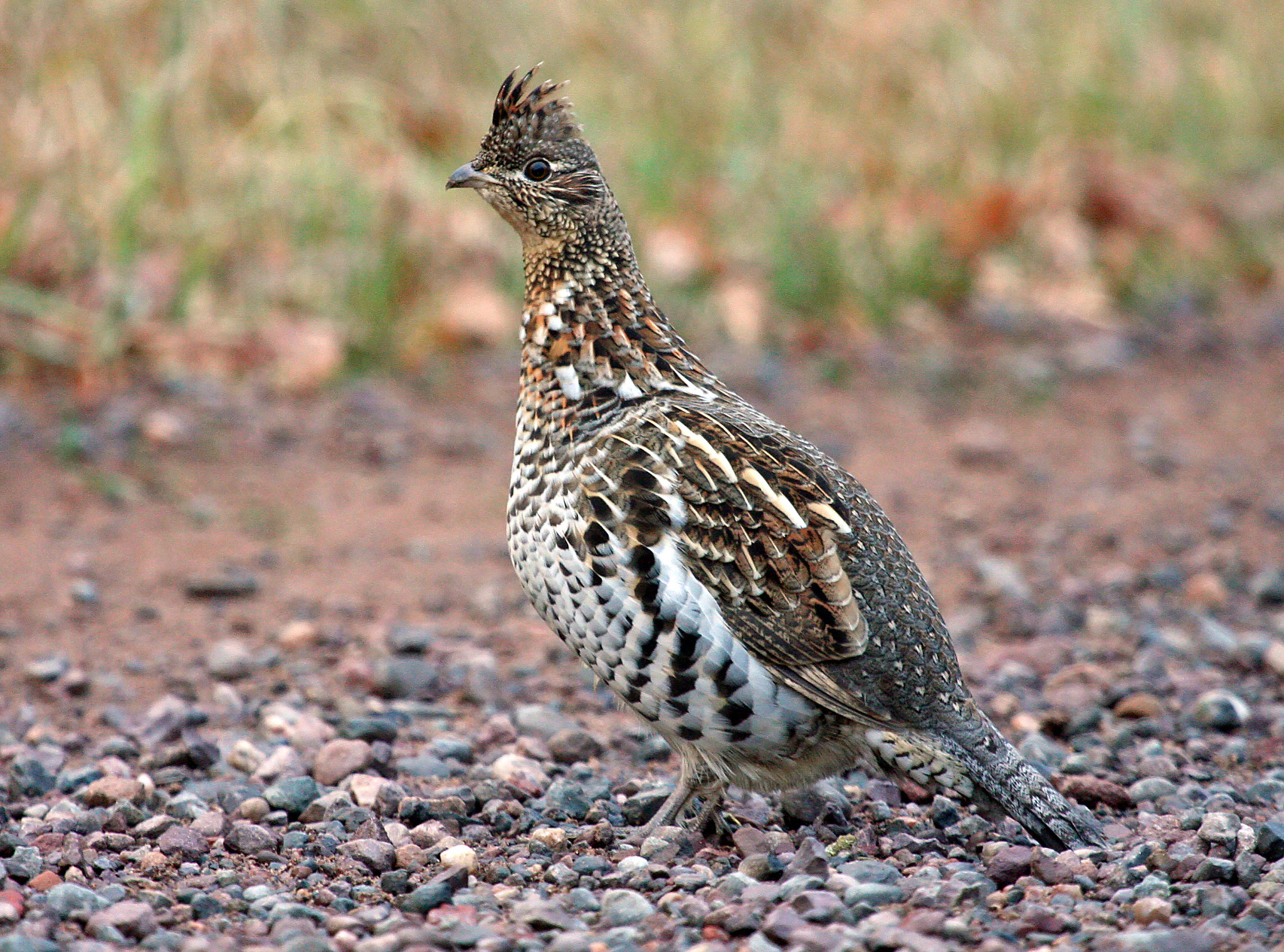Contact: Alaina Gerrits, DNR Assistant Upland Wildlife Ecologist
Alaina.Gerrits@wisconsin.gov or 608-513-6739
Participate In Ruffed Grouse West Nile Virus Sampling This Fall
2021 Marks Fourth And Final Year Of Multi-State Study
 Hunters and outdoor enthusiasts are encouraged to participate in the final year of a study on West Nile virus in ruffed grouse.
Photo credit: Wisconsin DNR
Hunters and outdoor enthusiasts are encouraged to participate in the final year of a study on West Nile virus in ruffed grouse.
Photo credit: Wisconsin DNR
MADISON, Wis. – The Wisconsin Department of Natural Resources (DNR) is once again asking ruffed grouse hunters and outdoor enthusiasts who come across a sick or dead grouse to submit a sample for a multi-state ruffed grouse West Nile virus study.
For the fourth and final year, the DNR and conservation partners will distribute testing kits to hunters, increasing the overall sample size and strengthening project results with the final year of data. Hunters who have a kit from a previous year are encouraged to collect a sample, fill the kit, and send it in to be processed; nothing in the kit expires.
Hunters who hunt the central and northern forests and would like to participate in the West Nile virus monitoring effort can request kits here. Kits will be available in early September. The DNR may limit the number of kits per individual to ensure samples come from a large geographic area.
The DNR will provide test results via email. Be aware that sample testing will not begin until after the grouse season has closed and final results will not be available for several months after that.
Mosquitos spread the West Nile virus, and its effects on birds can vary. Signs range from no clinical disease or illness to heart lesions and inflammation of the brain's lining and spinal cord. Many factors can influence how severely the virus affects an individual bird. There is no evidence that West Nile can be spread by handling dead birds or consuming properly cooked game.
Ruffed grouse are native to the northern United States and southern Canada. The Great Lakes region contains some of the most extensive forest habitats for grouse and the healthiest ruffed grouse populations in the nation. The Wisconsin DNR continues to work with partners to develop long-term management strategies for ruffed grouse in Wisconsin.
Sick And Dead Birds
In addition to collecting samples from harvested ruffed grouse, the DNR asks the public to report any sick or dead grouse observed while out in the field.
Those who find a ruffed grouse that appears sick or emaciated, or a freshly dead grouse, should take note of the location and promptly call the DNR county wildlife biologist for possible submission of the dead grouse for further investigation and to help the department track reports statewide.
Those who collect the carcass for testing should keep the entire bird intact. Place it into a plastic bag and keep the bird cool but not frozen. Bring the whole ruffed grouse carcass to your county wildlife biologist the same day or the next day. Prompt collection of ruffed grouse is necessary to prevent decomposition or scavenging. The DNR recommends that gloves are worn whenever handling dead animals, even those that appear healthy.
If refrigeration and prompt delivery are not possible, carcasses should be frozen and submitted to county wildlife biologists as soon as possible.
Carcasses in poor condition (scavenged with openings into the body cavity, odor, more advanced decomposition) will not be usable for testing. Still, observers should note the location and report the sightings to their county wildlife biologist.

